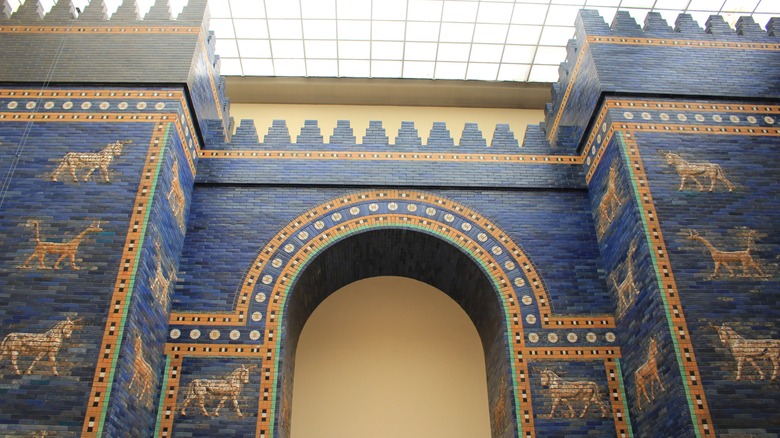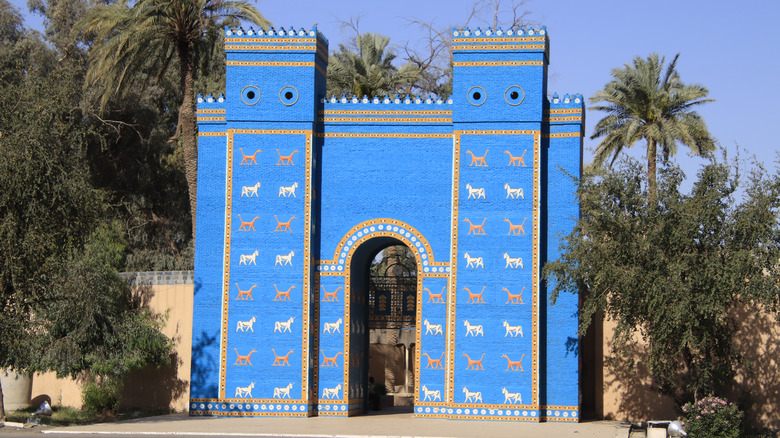How Ancient Babylon's Ishtar Gate Ended Up In Germany
For centuries, Babylon was the pinnacle of architectural grandeur. It was the heart of multiple empires, including two under its own name, and became a deeply cherished prize of Alexander the Great when he defeated Persian King Darius III at the Battle of Gaugamela. The ancient city was bordered by massive tan brick walls and was accessed via multiple gates (eight of the supposed 100 entrances have been confirmed to exist). These entrances were lined with glazed dark blue brick and had several friezes of animals meant to represent various deities (via World History Encyclopedia).
After the wars of succession between Alexander's generals and the eventual restoration of Persian rule, Babylon was gradually abandoned until it lay beneath the sands of Mesopotamia. For centuries, few likely have thought the biblical city would ever see any restoration, instead left to the imagination as a mythological place of hanging gardens and massive towers. However, by the late 1800s, a concentrated excavation effort was underway, and in 1914, the Ishtar Gate returned to the surface.
Germany's possession sparked protest from Iraq
The expedition to uncover Babylon was headed by two German archaeologists from 1899 to 1914, with work on the Ishtar Gate lasting the majority of that time. The cost of the affair left them believing they were indebted to their benefactors (via National Geographic). When Britain occupied the region after World War I and the fall of the Ottoman Empire, the Germans arranged to have the gate smuggled out piece by piece, until most of it was on its way to Berlin or already there (via BBC). Once all the pieces were accounted for, the gate's larger rear section was placed into storage, while the smaller front was the subject of an intensive restoration and reconstruction project.
The gates were mostly stripped of any color they once had by time and the elements, but fragments of the blue glazing remained at the site. Using these as a basis, museum staff applied new paint and enameling to the bricks, which was at least comparable to the original (via Artstor). The structure was then reassembled within the Pergamon Museum, where it remains to this day. Not unlike Britain's "housing" of ancient foreign relics, there has been protest regarding the Ishtar Gate, especially from Saddam Hussein's government (via The Guardian). The dictator was obsessed with the ancient city, to the point that he arranged for continued excavation of the site and had a small replica of the Ishtar Gate built in its place.

